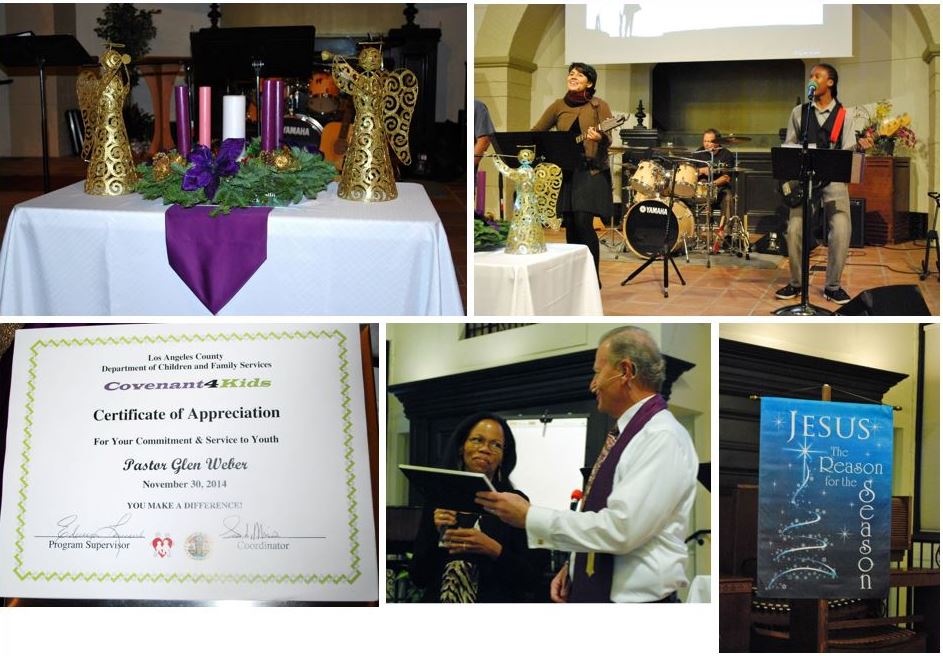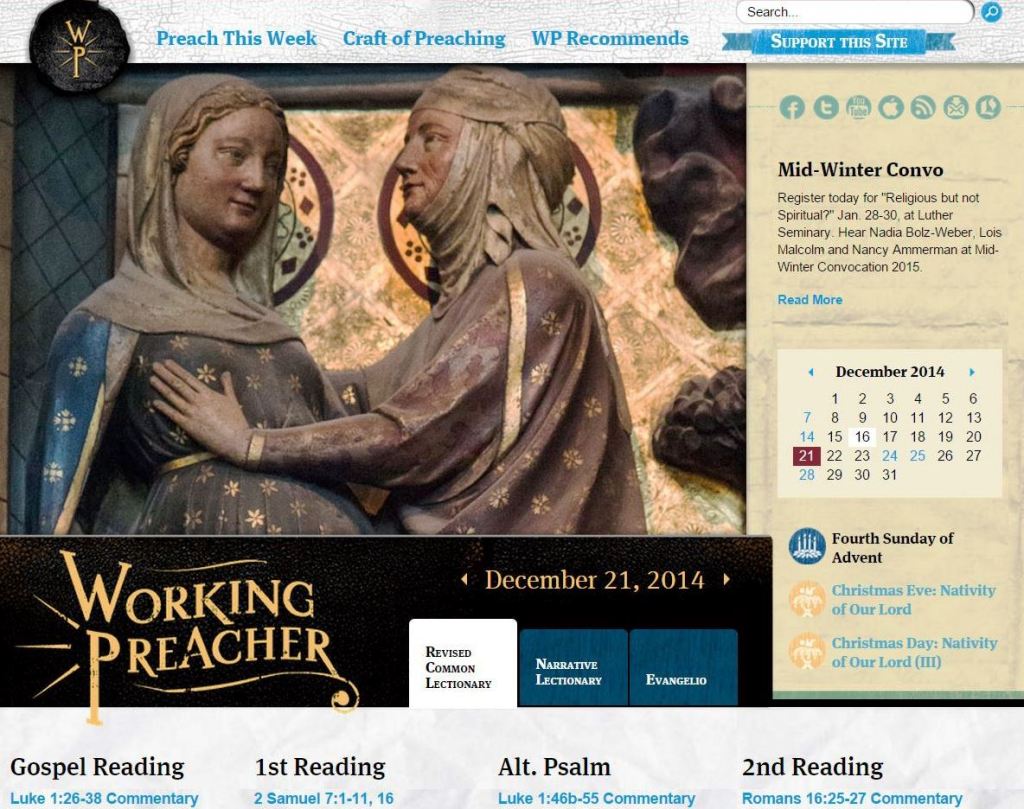This year the town of Big Sandy, Texas did not have anyone to set out their traditional Christmas decorations. In response to this need, New Beginnings Church, GCI’s congregation in Big Sandy pastored by Sonny Parsons, volunteered to join with the fire department to prepare the community decorations. Children and adults from the congregation joined in serving the community in this way.
Author: GCI Media
Vision clarification
As the new year begins, many church leadership teams will meet to prayerfully clarify their vision concerning the road ahead. For assistance in preparing (or updating) your vision statement, click here. To learn about a creative vision clarification process used by one church, watch this:
On YouTube at http://youtu.be/x_iEUwLO3J4.
Jesus: the double agent
Dear Brothers and Sisters in Christ,
 As the traditional day for celebrating the birth of Jesus, Christmas provides the church its focal point for gratefully acknowledging the Incarnation of the Son of God. In response to this historic event, the angels joyfully praised God (Luke 2:13) as they watched God’s master plan unfold. I believe this is significant to notice. The angels rejoiced because they knew it was God’s desire to be reconciled to his children, and that in Jesus, the children would be reconciled to their Father.
As the traditional day for celebrating the birth of Jesus, Christmas provides the church its focal point for gratefully acknowledging the Incarnation of the Son of God. In response to this historic event, the angels joyfully praised God (Luke 2:13) as they watched God’s master plan unfold. I believe this is significant to notice. The angels rejoiced because they knew it was God’s desire to be reconciled to his children, and that in Jesus, the children would be reconciled to their Father.
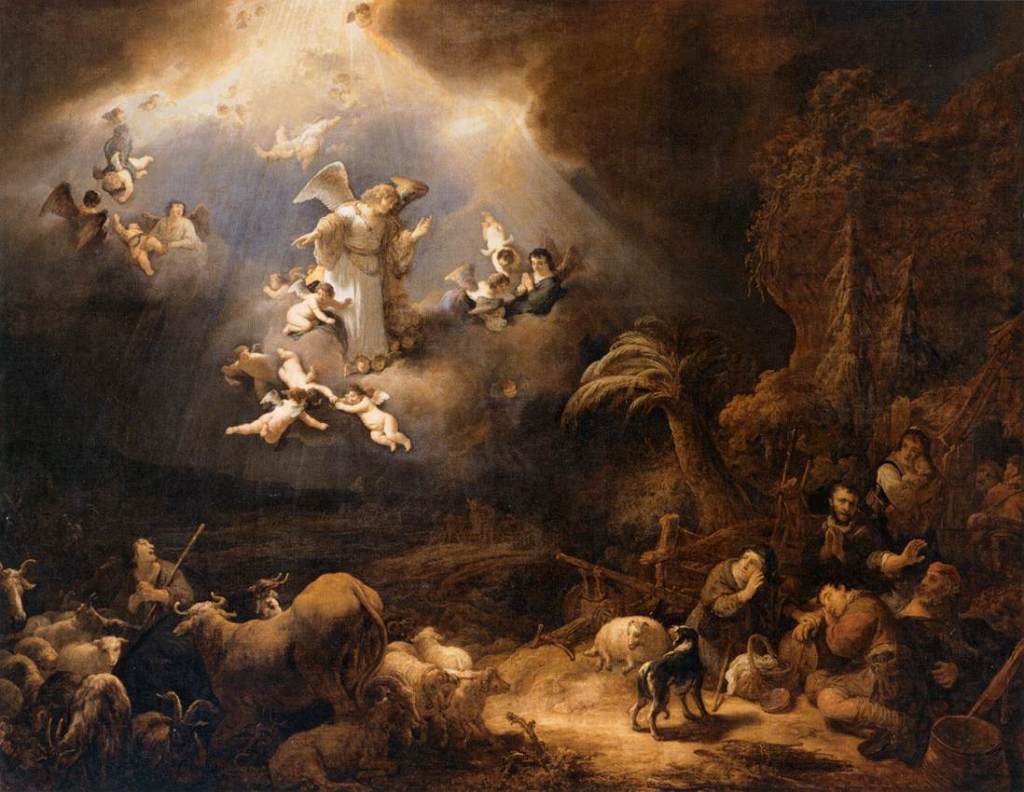
The Incarnation is not only for humanity and our reconciliation to God; it is also for the Father whose purpose has always been to be reconciled to his children. As fully God, Jesus acts in the role of the reconciler, and as fully human, he acts in the role of the one reconciled. Because he worked for both God and humanity, I fondly refer to Jesus as a “double agent.” But unlike other double agents, Jesus was loyal to both parties. One of my favorite secret agents, James Bond, temporarily saved the UK and the world from terror and ruin as he awaited his next assignment. But Jesus, through his one assignment, redeems and saves the whole world for eternity.
Whether or not the birth of Jesus occurred on December 25 is not important; what is important is that it did occur and is a real event to be celebrated. In Christmas celebrations, Christians honor the reality of the one plan of redemption throughout history—a plan brought about by Jesus Christ, who fulfills the promise to Abraham: “As many of you as were baptized into Christ have put on Christ. There is neither Jew nor Greek, there is neither slave nor free, there is no male and female, for you are all one in Christ Jesus. And if you are Christ’s, then you are Abraham’s offspring, heirs according to promise” (Galatians 3:27-29 ESV). As the one true son of Israel, Jesus is the answer to and fulfillment of all of God’s promises. “For all the promises of God find their Yes in him. That is why it is through him that we utter our Amen to God for his glory” (2 Corinthians 1:20 ESV).
As you know, God made a covenant with Israel: “If you obey me fully and keep my covenant, then out of all nations you will be my treasured possession. Although the whole earth is mine, you will be for me a kingdom of priests and a holy nation” (Exodus 19:5-6). Unfortunately, Israel as a nation was not faithful to the covenant as the prophets repeatedly warned: “They have turned back to the iniquities of their forefathers, who refused to hear my words. They have gone after other gods to serve them. The house of Israel and the house of Judah have broken my covenant that I made with their fathers” (Jeremiah 11:10 ESV).
It is only in Jesus’ total obedience as a human son of Israel that the covenant is fulfilled. He is the true Israel of God. He inherits the Abrahamic promises on behalf of of all Israel. And that’s good news for all people because the eternal Son of God, through his Incarnation, became the second Adam—the representative for all humanity. Therefore we rest on his perfect obedience. As our great High Priest Jesus acts in our place and on our behalf. In this way, all who “belong to him” are included in God’s “Yes.” “Know then that it is those of faith who are the sons of Abraham. And the Scripture, foreseeing that God would justify the Gentiles by faith, preached the gospel beforehand to Abraham, saying, ‘In you shall all the nations be blessed’” (Galatians 3:7-8 ESV).
In his book, Incarnation, T. F. Torrance makes the point that Jesus is the fulfillment of the prophecies:
If it is the historical factuality of Jesus that is of controlling importance, then that Jesus must be presented as really embedded in history, embedded therefore in the hard stubborn history of Israel. That is precisely the case with Jesus (p. 16).
Jesus is God in the flesh. He is Israel in his humanity so that in him God and humanity are brought together in flesh and blood, in time and space, in person.
As I said before, Jesus is a true double agent—always for us, always on our side, the only one who has redeemed and saved all. And also like a double agent, not everything is transparent. Jesus’ mortal humanity concealed his divine identity. In commenting on Paul’s thoughts to the Philippians, Karl Barth says the following:
[Jesus] puts himself in a position where only he himself knows himself in the way that the Father knows him. In the unknowability into which he enters, it is now certainly the Father’s part to reveal him. But the step that brings him into that unrecognizable condition, into the incognito, is grounded entirely in himself alone… He exists in such a way that to any direct, immediate way of regarding him—e.g. to the historical and psychological approach—he does not present the picture of his proper, original, divine Being, but solely the picture of a human being (The Epistle to the Philippians, p. 63).
What becomes revealed in Jesus is that the Triune God cannot be known in a true and saving way by mere mortals. So God the Father in the person of Jesus, reveals the divinity of his Son by the Spirit. And that revelation can only come about by grace which, at the same time, reconciles and redeems us. Knowing God in Jesus the incarnate Son transforms us in every way. That is why Jesus said, “All things have been handed over to me by my Father; and no one knows the Son except the Father, and no one knows the Father except the Son and anyone to whom the Son chooses to reveal him” (Matthew 11:27). The early church put it this way: “Only God knows God and only God reveals God.”
Here’s a related quote I much enjoy from N. K. Gupta:
Christ by becoming a mortal, accepted slavery to those cosmological forces that lord over humanity. But, like a true “double agent” of popular espionage, he never forsook his true allegiance to God or his status as Son of God… Christ is ingeniously able to nullify their own power through the ultimate act of eschatological reversal: his own death and resurrection that is capable of being shared by others” (Horizons in Biblical Theology, 32.1, pp. 1-16).
At Christmas we rejoice along with the angels in this great reversal. We celebrate Jesus’ perfect obedience, which fulfilled the covenant on our behalf. We celebrate that Jesus is the one true son of Israel, and because we are in him, by faith we share with him in the covenant promises. We celebrate that Jesus never forsook his allegiance to God nor his allegiance to humanity. We celebrate the redemption we have in Christ our Savior. We celebrate the Incarnation.
Merry Christmas!
Joseph Tkach
PS: For a parody of the rock anthem “Bohemian Rhapsody” that powerfully recounts the Nativity story, watch the video at http://youtu.be/pW1pbuyGlQ0.
Advent outreach
Pictured below is the worship service on the first Sunday of Advent at New Hope Christian Fellowship, a GCI congregation in Eagle Rock, California. Pictured on the bottom row, center, is Sharon Morris from the Los Angeles County Department of Children and Family Services (DCFS), presenting to New Hope pastor Glen Weber a certificate of appreciation for “commitment and service to youth.” Several New Hope members received special training so they can bring foster children to church. Several have attended, with two doing so regularly.
Advent sermon prep
Looking for assistance in preparing Advent/Christmas sermons (or sermons any other time of the year)? GCI-USA regional pastor and CAD communications coordinator Ted Johnston reports that one of his favorite resources is Working Preacher—a website from the faculty at Luther Seminary that provides commentary and sample sermons related to the Revised Common Lectionary readings. As with all of such resources, what is found at Working Preacher will need some adaptation. However, it is a generally reliable resource that typically is Trinitarian in its theological perspective.
Working Preacher is found at www.workingpreacher.org/.
For additional ideas about using online resources for sermon preparation, go to www.lifeway.com/article/pastor-using-online-resources-sermon-preparation?emid=Content-PastorsToday-OnlineSermonPreparation-20130408. For suggestions about sermon preparation for bivocational pastors, go to: http://philipnation.net/2013/07/sermon-prep-for-the-bivocational-pastor/.
Ordinations in GCI South Africa
GCI in South Africa recently announced that two elders were recently ordained to serve in the Port Elizabeth congregation. Those ordained were Albert Abrahams and Zach Hlalu. At the same time, Martin du Preez was commissioned to serve on the congregation’s pastoral team.

Blooms’ 1st grandchild
GCI regional pastor Randy Bloom and his wife Debbie are celebrating a lot of “firsts.” Their firstborn child Lisa, who lives with her husband Chris Higgins in Paris, on December 13 delivered her first child, Amos Ryan Higgins (6½ pounds—see picture below). Now Randy and Debbie are celebrating their first grandchild! Randy and Debbie are in Paris visiting their new grandson. It will be a memorable Christmas and New Year! Congratulations to all.
Richard Ridgell
Here from his wife Pam, is an update on Pastor Richard Ridgell’s battle with cancer. Click here for the earlier prayer request.

It has been a hard few months since I last updated you on Richard’s lung cancer ordeal. It has been an uphill battle for him. He has had to go on oxygen at home and is filing for long-term sick leave at his job. He will be cut to half salary but will continue his health and life insurance for six months. Richard is still taking medication for the cancer but will know more when he visits the doctor next week. I have been doing the sermons the last two weeks at church but he is hoping he can make it this week as he has a Christmas series ready to go. We will be glad when 2014 ends and we can start a new year. This one has been tough for us. But we know that God is the one in charge and we are trusting him for strength to get us through what he has planned for us. We thank everyone for their prayers and we continue to ask for them.
Cards may be sent to:
Johannsens’ 40th
Jesus: Merely a myth?
Dear Brothers and Sisters in Christ,
 The Advent-Christmas season is a time of joy, hope and promise as we reflect on Jesus and the Incarnation. People all over the world are telling the story about his birth. The airwaves are filled with songs of the season. Churches are celebrating with pageants, cantatas and choirs. It’s the time of the year when you’d think the whole world has a chance to learn the truth about Jesus, the Messiah.
The Advent-Christmas season is a time of joy, hope and promise as we reflect on Jesus and the Incarnation. People all over the world are telling the story about his birth. The airwaves are filled with songs of the season. Churches are celebrating with pageants, cantatas and choirs. It’s the time of the year when you’d think the whole world has a chance to learn the truth about Jesus, the Messiah.
Sadly, many don’t get the full meaning of the season and simply celebrate Christmas because of the holiday spirit. They miss out on so much because either they don’t know Jesus or have fallen for the lie that Jesus is merely a myth—a contention that has been around since Christianity began.

This time of year it’s common for articles to declare that “Jesus is a myth,” typically noting that the Bible is unreliable as a source of history. But these claims overlook the fact that the Bible has been around far longer than many “credible” sources. Historians often cite as reliable the writings of historian Herodotus. Yet there are only eight known copies of his writings, with the earliest dated 900 A.D.—some 1,300 years after Herodotus’ time.
Contrast that with the “discounted” New Testament, which was written shortly following Jesus’ death and resurrection. The earliest New Testament manuscript (a fragment from the Gospel of John) is dated A.D. 125-130 A.D. There are more than 5,800 complete or fragmented copies of the New Testament in Greek, about 10,000 in Latin and 9,300 in other languages. Let me share with you three notable quotes that point to the authenticity of the New Testament accounts of Jesus’ life.
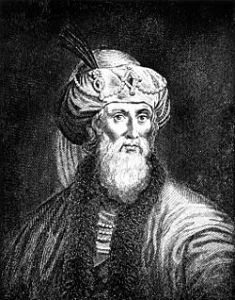
The first quote is from first century Jewish historian, Flavius Josephus:
Now there arose at this time a source of further trouble in one Jesus, a wise man who performed surprising works, a teacher of men who gladly welcomed strange things. He led away many Jews, and also many of the Gentiles. He was the so-called Christ. When Pilate, acting on information supplied by the chief men around us, condemned him to the cross, those who had attached themselves to him at first did not cease to cause trouble, and the tribe of Christians, which has taken this name from him is not extinct even today. (Antiquities, 18.3.3)
F.F. Bruce, who translated this quote, noted that, “The historicity of Christ is as axiomatic for an unbiased historian as the historicity of Julius Caesar.”
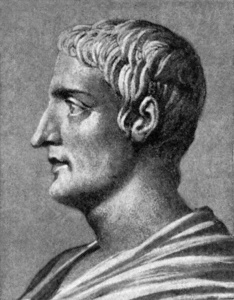
The second quote is from Roman historian Carius Cornelius Tacitus who also wrote in the first century. Referring to accusations that Nero burned Rome and then blamed Christians, he wrote this:
Nero procured others to be accused, and inflicted exquisite punishment upon those people, who were in abhorrence for their crimes, and were commonly known by the name of Christians. They had their denomination from Christus, who in the reign of Tiberius was put to death as a criminal by the procurator Pontius Pilate… At first they were only apprehended who confessed themselves of that sect; afterwards a vast multitude discovered by them, all of which were condemned, not so much for the crime of burning the city, as for their enmity to mankind. (Annals, 15, 44)
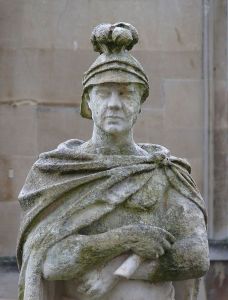
The third quote is from Gaius Suetonius Tranquillus, official historian of Rome during the reigns of Trajan and Hadrian. In a book written in A.D. 125 concerning the lives of the first twelve Caesars, Suetonius wrote this about Claudius (who reigned from A.D. 41 to 54):
He banished the Jews from Rome, who were continually making disturbances, Chrestus being their leader. (Life of Claudius 25.4, and note his spelling of Christ as “Chrestus”)
Suetonius’s statement points to the growth of Christianity in Rome prior to A.D. 54, only two decades after Jesus’ death. Reflecting on this and other evidence, British New Testament scholar I. Howard Marshall concluded: “It is not possible to explain the rise of the Christian church or the writing of the Gospels and the stream of tradition that lies behind them without accepting the fact that the Founder of Christianity actually existed.”
Though other scholars doubt the authenticity of the first two quotes and a few even claim them to be forgeries by Christians, the criterion for validating these references is solid. I enjoy a comment made by historian Michael Grant in his book, Jesus: An Historian’s Review of the Gospels: “If we apply to the New Testament, as we should, the same sort of criteria as we should apply to other ancient writings containing historical material, we can no more reject Jesus’ existence than we can reject the existence of a mass of pagan personages whose reality as historical figures is never questioned.”
Though skeptics are quick to dismiss what they don’t want to believe, there are exceptions. Noted skeptic and liberal theologian John Shelby Spong wrote in Jesus for the Non-Religious, that “Jesus was, first of all, a human being who actually lived at a particular time in a particular place. The man Jesus was not a myth, but a figure of history from whom enormous energy flowed—energy that still in our day cries out to be adequately explained.”
In his days as an atheist, C.S. Lewis believed that the New Testament accounts about Jesus were mere legends. But when he read them for himself and compared them with what he knew of actual ancient legends and myths, he saw clearly that these writings were nothing of the sort. They had the form and quality of recollections concerning the daily life of a real person. With that recognition, a barrier to faith fell away. From that point forward, Lewis had no problem believing in the historical reality of Jesus.
Many skeptics assert that Albert Einstein, as an atheist, did not believe in Jesus. Though Einstein did not believe in a “personal God,” he refused to combat those who did, because “Such a belief seems to me preferable to the lack of any transcendental outlook” (Einstein and Religion: Physics and Theology, by Max Jammer). Einstein, who grew up a Jew, admitted to being “enthralled by the luminous figure of the Nazarene.” When asked by an interviewer if he accepted the historical existence of Jesus, Einstein gave this reply: “Unquestionably. No one can read the Gospels without feeling the actual presence of Jesus. His personality pulsates in every word. No myth is filled with such life. How different, for instance, is the impression which we receive from an account of legendary heroes of antiquity like Theseus. Theseus and other heroes of his type lack the authentic vitality of Jesus” (“What Life Means to Einstein: An Interview,” by George Sylvester Viereck, The Saturday Evening Post, October 26, 1929).
I could go on, but as Roman Catholic scholar Raymond Brown has rightly noted, concentrating on the question of Jesus being a myth causes many to miss the real point of the Gospels. In The Birth of the Messiah, Brown mentions that he is often approached around Christmas by those wanting to write an article about the historicity of Jesus’ birth. “With little success I try to convince them that they could promote understanding of the birth stories by concentrating on the message of those stories instead of an issue that was very far from primary [for] the evangelists.”
When we keep our focus on sharing the story of Christmas, instead of on trying to convince people that Jesus was not a myth, we are giving living proof of Jesus’ reality. That living proof is the life he now lives in us and among us. The Bible’s focus and purpose is not to prove the historical validity of Jesus’ incarnation, but to share why he came and what his coming means to us. The Holy Spirit uses Scripture to put us in actual contact with the incarnate and risen Lord who draws us to himself that we might believe in him and worship the Father through him. Jesus came into the world as a demonstration of God’s love for each and every one of us (1 John 4:10). Here are a few other reasons why he came:
- To seek and save the lost (Luke 19:10).
- To save sinners and call them to repentance (1 Timothy 1:15, Mark 2:17).
- To make himself a ransom for humanity (Matthew 20:28).
- To bear witness to the truth (John 18:37).
- To do the will of the Father, which is to bring many children to glory (John 5:30, Hebrews 2:10).
- To be the light of the world, the way, the truth and the life (John 8:12; 14:6).
- To preach the good news about the kingdom of God (Luke 4:43).
- To fulfill the law (Matthew 5:17)
- Because the Father sent him: “For God so loved the world, that he gave his only Son, that whoever believes in him should not perish but have eternal life. For God did not send his Son into the world to condemn the world, but in order that the world might be saved through him. Whoever believes in him is not condemned, but whoever does not believe is condemned already, because he has not believed in the name of the only Son of God” (John 3:16-18).
This month we celebrate the truth of God entering our world in Jesus. It is good for us to remember that not everyone knows this truth, and we have been invited (commissioned) to share it with others. Jesus is more than a historical figure—he is the Son of God who came to reconcile all to the Father in the Holy Spirit. That is what makes this season one of joy, hope and promise.
Enjoying the season,
Joseph Tkach



